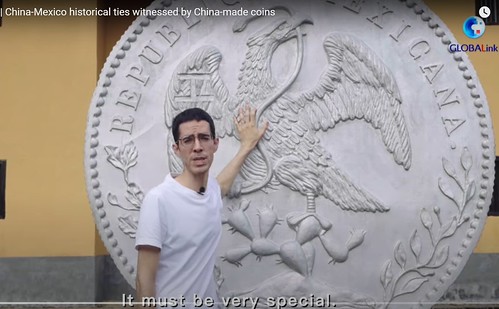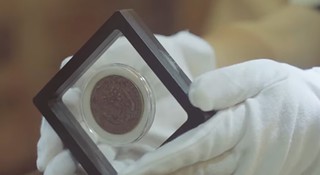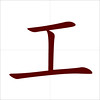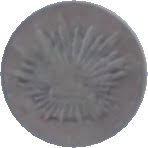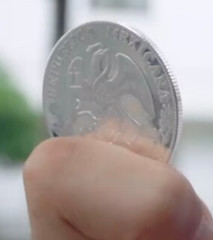
PREV ARTICLE
NEXT ARTICLE
FULL ISSUE
PREV FULL ISSUE
CHINA'S BIG MEXICAN COIN SCULPTURE"Big Coin" sculptures are a real thing, and probably the most famous is the Sudbury "Big Nickel". Last week I saw an article about a similar sculpture in China, but there was no accompanying photo. Amazingly, the sculpture looks like a Mexican coin. So I reached out to E-Sylum reader Adrián González-Salinas for more information. First, an excerpt from the article. -Editor At the first sight of the huge sculpture of a coin set in Jinggangshan in East China's Jiangxi province, Diego Barroso, a Mexican language teacher based in Shanghai, wonders how the pattern of Latin America occurs on the China-made coins. The coin, made by the Red Army Mint during the Chinese revolution, was engraved with an eagle carrying a snake in its mouth, standing on a cactus growing between rocks in a lake. On the wings of the eagle is engraved the Chinese character gong, which means workers. The picture is quite similar to the national emblem of Mexico. To figure out the connection between the two countries represented on the coins, Barroso came to Jinggangshan, the "cradle" of the Chinese revolution. In 1928, in a bid to consolidate and develop revolutionary bases, forefathers of the Communist Party of China Mao Zedong and Zhu De, with their army, built the Red Army Mint in Jinggangshan, modeling the coins on the Mexican silver dollar. A professor from the China Executive Leadership Academy in Jinggangshan explained to Barroso why they chose Mexican money. Wen Shangqing, an expert on the economic history of the CPC, says that, during the late Qing Dynasty (1644-1911) and the period before the New China was established in 1949, the Mexican silver dollar was among the most widely used foreign currencies in southern and central China. As early as colonial times, some well-known silversmiths in Mexico started to make silver coins and molds, some of which circulated to other countries including China, says Javier Ocampo, a Mexican expert in local chronicles study. "After the Red Army Mint opened, workers used silver and jewelry captured from the enemy to mint coins, on which they engraved the Chinese character gong to represent the government of workers, farmers and soldiers," says Li Haiquan, director of the Red Army Mint Site in Jinggangshan. Mao emphasized the color and quality of the coins, asking the workers to use fine silver as their raw material, Li says. The mint soon grew to employ dozens of workers and had the capability of producing more than 400 coins at a time in one stove. It gained wide support and trust from people in the revolutionary bases. More than 10,000 coins had been made by the mint in the six months since it was put into operation, and the flow of coins reached Jiangxi's counties along provincial boundaries like Yongxin and Suichuan. After hearing the story about the Mexican silver dollar's significant contribution in Jinggangshan during the Chinese revolution, Ocampo says, "I feel so proud as a Mexican."
To read the complete article, see:
Adrián writes: "Last week I watched a YouTube video about this story. I think they are talking about the 1898 Silver $1 Peso with mint = M° (Mexico City). As US Trade Dollars, many 8 Reales and One Peso Silver mexican coins circulated in China with chopmarks. I have attached some pictures and information about the 1898 $1 Silver Mexican and San Francisco, CA. coin" Thank you! Great story. See the complete video, linked below. But note that it was produced by the Xinhua News Agency, the official state-run press agency of the People's Republic of China. Xinhua. There may be more to the story than is presented here, but the video seems like a reasonable starting point for information. It begins by describing the Mexican 8 reale coin as a world trade dollar that circulated as far as China. The story shifts to 1928 with an effort by the Communists to create local copies of the Mexican coin to which they added the "gong" character (for "worker"). In their telling of the story, the early coins were of poor quality with a dull sound, and Chairman Mao himself directed the Mint to use the best quality silver and materials. They say about 10,000 gong coins were made, and that the effort led to the establishment of China's Mint. The Director of the Red Army Mint is interviewed.
The 1898 coins Adrián mentions were 1949 restrikes from original dies produced at the San Francisco Mint under a contract from Mexico to fulfill an order from China for Mexican pesos "of the old type". Adrián provided an article by A.F. Pradeau from the September 27, 1968 (Vol V, No. 60) issue of Plus Ultra, a publication of the Azteca Numismatic Society. I was unable to convert the scan to text for publication here, but it states that 10,250,000 pieces were struck. The article further notes that during the 1949 American Numismatic Association convention held in San Francisco, visitors toured the Mint and witnessed the striking of some of the coins. So there are two coins discussed here - the 1928 China-made ones, and the 1949 US-made restrikes. The "Big Coin" shows a "chopmark" on the eagle's wing, and I believe this is the "gong" character, which is in the shape of an "I". Are any of our readers familiar with these coins? Anyone have one in their collection? -Editor Adrián adds: "Well, I watched the video again and I could see the reverse (in Mexico, the side of the coin with the eagle is the obverse) of the chinese coin. This is the reverse of the coin. "I could see the coin has the term "10 Ds 20 Gs" (10 Dineros 20 Granos) in the reverse which means the silver's fineness (= 90.27% Ag) and also, it was an 8 Reales coin. The 8 Reales coins were struck for 14 mexican mints in the period 1824-1897. So, the legend on the reverse would be as: "8 Rs . Mint . Year . Assayer . 10 Ds. 20 Gs", regrettably I can't see the Mint, Year and Assayer. "The coin restrike in 1949 has the denomination as UN PESO in lieu of 8 R and the silver's fineness as 902,7 instead of 10Ds 20Gs. These Un Peso coins were struck 1898-1909 for only 4 mints. "Finally and just a curiosity, Mr. Barroso shows a fake coin in the video (there are no 8 Rs or Pesos in Proof)."
To watch the video, see:
To read an earlier E-Sylum article, see:
Wayne Homren, Editor The Numismatic Bibliomania Society is a non-profit organization promoting numismatic literature. See our web site at coinbooks.org. To submit items for publication in The E-Sylum, write to the Editor at this address: whomren@gmail.com To subscribe go to: https://my.binhost.com/lists/listinfo/esylum All Rights Reserved. NBS Home Page Contact the NBS webmaster 
|
